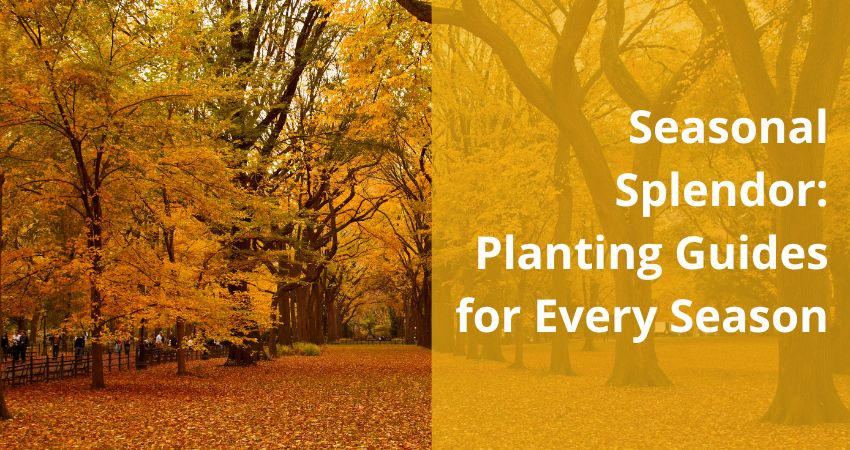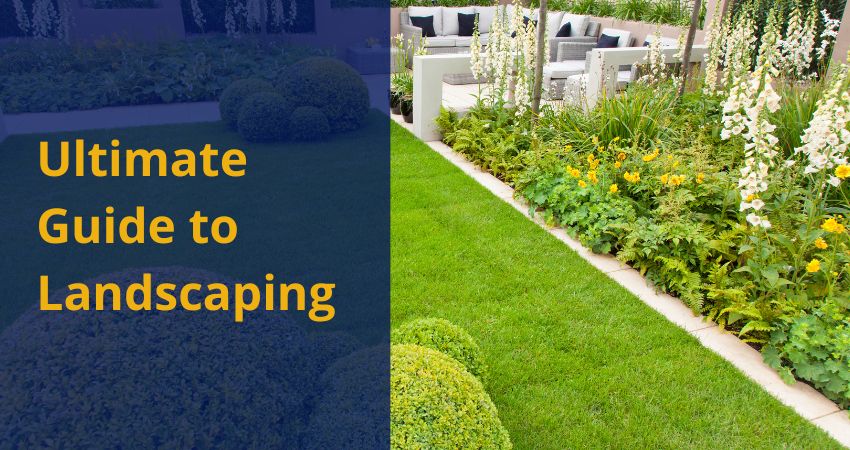
- Wed, May 2024
- |
- Moran’s Landscaping & Excavation LLC
Landscaping is more than just planting trees and shrubs; it’s an art form that transforms ordinary spaces into stunning outdoor sanctuaries. Whether you’re looking to increase your property’s value, create a serene retreat, or make your home the envy of the neighborhood, thoughtful landscaping can achieve it all. Dive into our comprehensive guide to discover how expert landscaping can revolutionize your outdoor space.
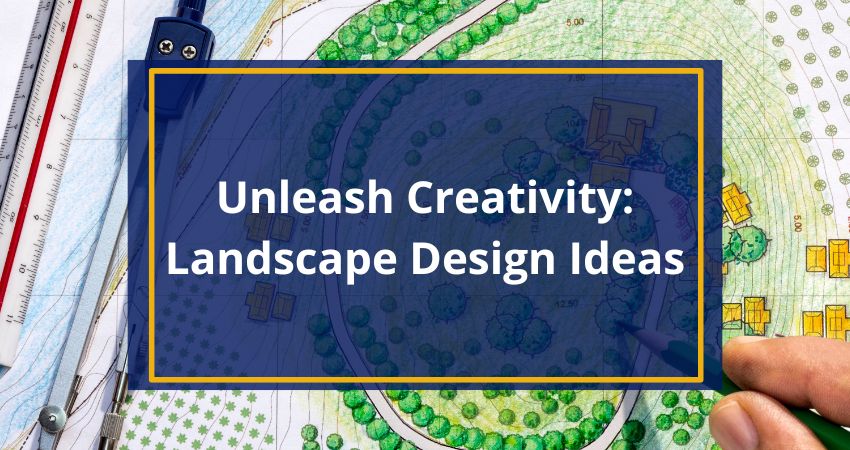
1. Unleash Creativity: Landscape Design Ideas
Landscape design combines creativity and practicality. Explore popular styles like modern, traditional, and cottage. Each style has unique features that can be tailored to suit your space and preferences.
Transformative Design Styles
Modern landscapes focus on clean lines and minimalism. Traditional designs incorporate classic elements, while cottage gardens emphasize a charming, rustic feel. Choose a style that reflects your personality and complements your home.
Inspirations from Successful Designs
Look for inspiration in successful landscape projects. Analyze what works and why. Consider factors like plant selection, hardscape elements, and overall layout. This will help you create a cohesive and appealing design.

2. Go Green: Sustainable Landscaping
Sustainable landscaping prioritizes environmental health. It involves using native plants, conserving water, and reducing waste. These practices not only benefit the environment but also create low-maintenance, resilient gardens.
Eco-Friendly Garden Tips
Choose native plants that thrive in your climate. Implement water-saving techniques like drip irrigation. Use organic mulch to enrich the soil and reduce water evaporation.
Native Plants and Water Conservation Mastery
Native plants are adapted to local conditions, requiring less water and care. Group plants with similar water needs together. Install rain barrels to collect and reuse rainwater, reducing dependence on irrigation.
3. Seasonal Splendor: Planting Guides for Every Season
Seasonal planting ensures your garden looks vibrant year-round. Different plants thrive in different seasons, so planning ahead is key to maintaining a beautiful garden throughout the year.
Maximizing Seasonal Beauty
Seasonal planting helps you make the most of your garden. By choosing plants suited to each season, you can enjoy continuous blooms and a dynamic landscape.
Planting Calendars for Year-Round Vibrance
Use planting calendars to guide your choices. They provide information on the best planting times for various plants, ensuring optimal growth and health.
Top Plants for Every Season
Spring favorites include tulips and daffodils, while summer shines with sunflowers and lavender. Fall welcomes chrysanthemums and asters, and winter showcases evergreens and hellebores. Choose plants that flourish in each season for a year-round garden.
Feel free to review these sections and let me know if you need any adjustments or if you’d like to proceed with the next points.
4. The Art of a Perfect Lawn: Mastering Care and Maintenance
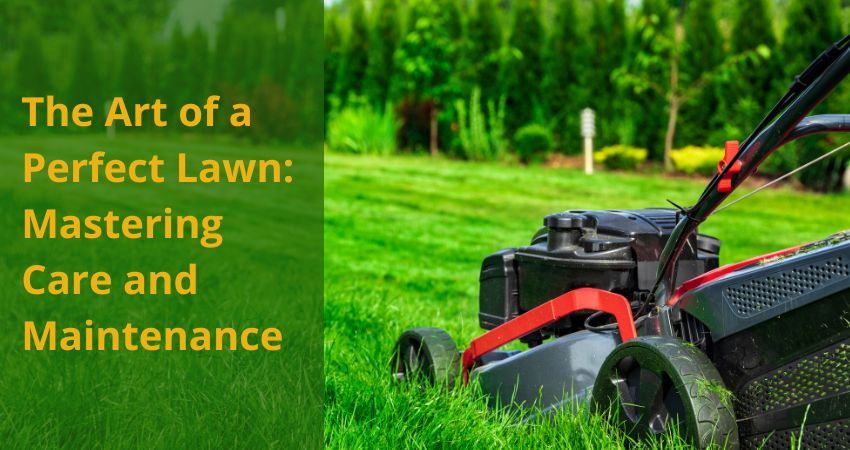
A lush, green lawn is the pride of any garden. Proper lawn care ensures your grass stays healthy and vibrant. Regular mowing, watering, and fertilizing are essential for maintaining a beautiful lawn.
Seasonal Lawn Maintenance Tips
Adapt your lawn care routine to the seasons. In spring, aerate and fertilize to rejuvenate your lawn. During summer, water deeply and mow regularly to maintain its lushness. In fall, overseed and rake leaves to prepare for winter. Winterize your lawn by keeping it clear of debris and minimizing foot traffic.
Solving Common Lawn Problems
Address common lawn issues like weeds, pests, and bare spots promptly. Use appropriate treatments to tackle weeds and pests effectively. For bare spots, reseed and ensure proper watering to encourage new growth. Regular lawn care prevents these issues and keeps your lawn looking its best year-round.
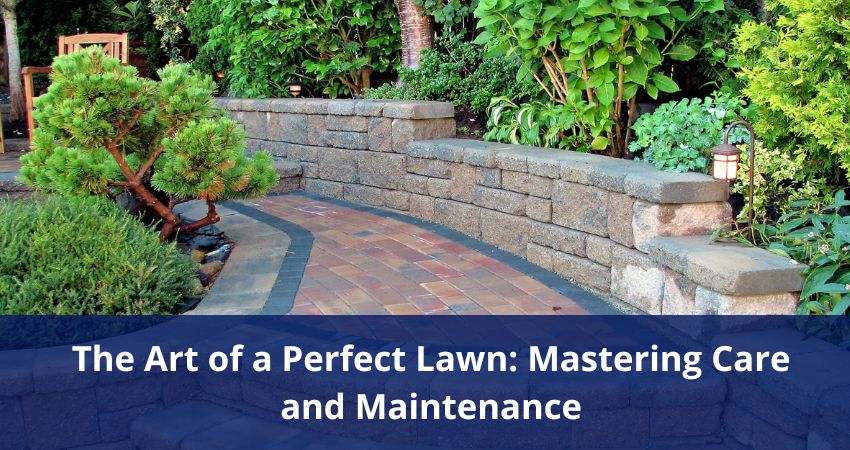
5. Sculpting Your Landscape: Hardscape Installation and Care
Hardscape elements add structure and functionality to your garden. They include features like patios, walkways, and retaining walls. Proper installation and care are crucial for durability and aesthetics.
Designing Hardscape Features
Plan your hardscape features carefully. Consider the layout, materials, and integration with your overall landscape design. Choose materials that complement your home and garden style. Hardscapes not only provide functionality but also enhance the visual appeal of your outdoor space.
Maintenance Tips for Hardscape
Regular cleaning and sealing protect hardscape surfaces from weather damage and stains. Inspect for cracks and make necessary repairs promptly to maintain their structural integrity. Proper maintenance extends the life and beauty of your hardscape elements, ensuring they remain a highlight of your garden.
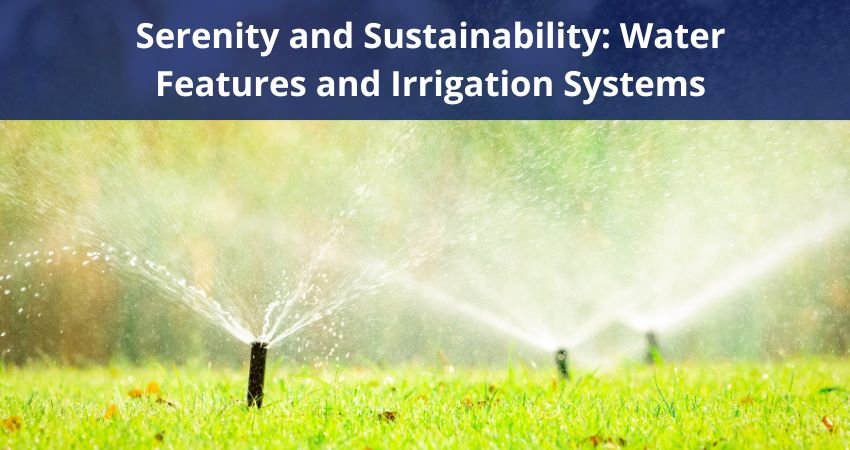
6. Serenity and Sustainability: Water Features and Irrigation Systems
Water features bring tranquility and beauty to any landscape. They include ponds, fountains, and waterfalls. Effective irrigation ensures your plants receive the right amount of water, promoting healthy growth and sustainability.
Adding Water Features to Your Garden
Choose a water feature that suits your space and style. Consider factors like size, placement, and maintenance. Ponds can attract wildlife and create a serene environment, while fountains and waterfalls add a dynamic element. Properly maintained water features can become the focal point of your garden.
Efficient Irrigation Practices
Install an irrigation system to save time and water. Drip irrigation and soaker hoses are efficient options that deliver water directly to plant roots. Adjust your irrigation schedule based on weather and plant needs to avoid overwatering or underwatering. Efficient irrigation practices promote healthy plant growth and conserve water.
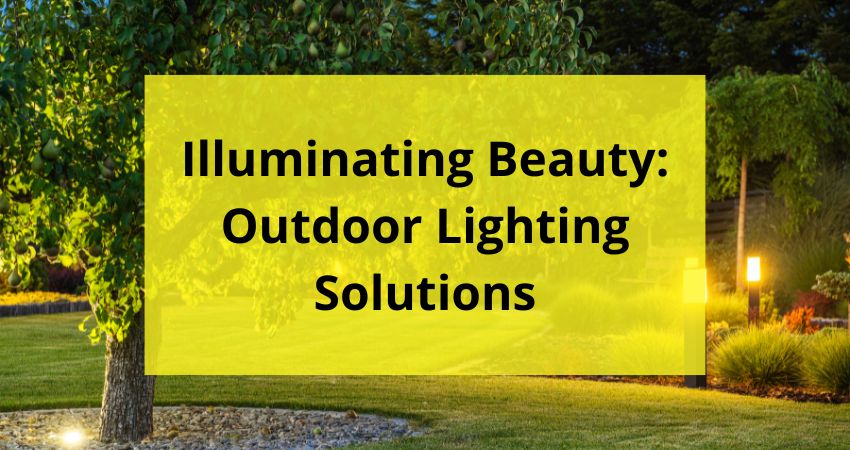
7. Illuminating Beauty: Outdoor Lighting Solutions
Outdoor lighting enhances safety and ambiance. It highlights landscape features and extends the usability of your garden into the evening. Thoughtful lighting design adds a magical touch to your outdoor space.
Types of Outdoor Lighting
Pathway lights illuminate walkways and prevent accidents, creating a safe environment. Accent lights highlight trees, sculptures, and architectural features, adding depth and interest to your garden. Security lights deter intruders and enhance safety, providing peace of mind.
Installing Outdoor Lighting
Plan your lighting layout for optimal effect. Use a mix of lighting types for a balanced look. Solar-powered lights are eco-friendly and easy to install, offering a sustainable option. Regularly check and maintain your lighting system to ensure it operates efficiently and continues to enhance your outdoor space.
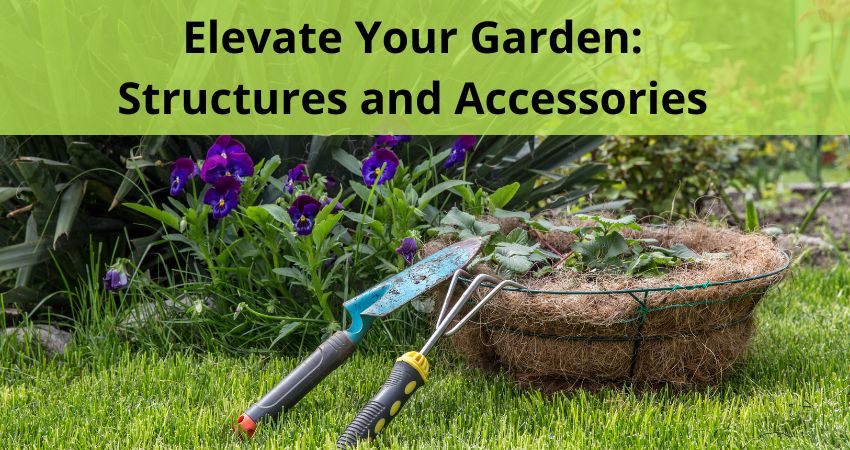
8. Elevate Your Garden: Structures and Accessories
Garden structures and accessories add charm and functionality to your landscape. They include elements like arbors, pergolas, and trellises. These structures not only enhance the visual appeal but also provide support for climbing plants and create inviting outdoor spaces.
Types of Garden Structures
Arbors and pergolas create beautiful entryways and shaded areas in your garden. Trellises provide support for climbing plants like roses and vines. Garden accessories, such as benches and birdbaths, add character and attract wildlife.
DIY Garden Structure Projects
Building your own garden structures can be rewarding and cost-effective. Use materials like wood, metal, or bamboo to create unique designs. DIY projects allow you to customize structures to fit your garden’s style and needs, adding a personal touch to your outdoor space.
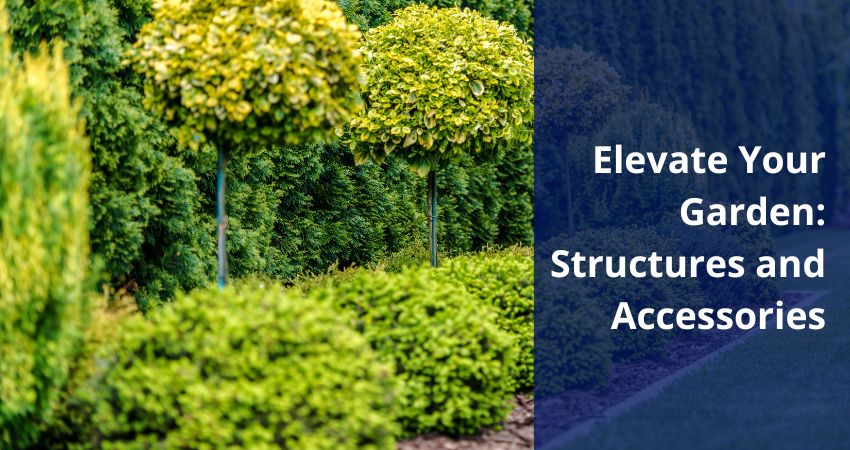
9. Tree and Shrub Mastery: Care and Cultivation
Trees and shrubs are the backbone of any landscape. They provide structure, shade, and beauty. Proper care and cultivation ensure they remain healthy and thrive for years to come.
Importance of Trees and Shrubs
Trees and shrubs enhance the landscape’s visual appeal and provide essential environmental benefits. They offer shade, improve air quality, and support wildlife. Strategically placed trees can also reduce energy costs by providing natural cooling.
Planting, Pruning, and Care Tips
Select the right tree and shrub species for your climate and soil conditions. Proper planting techniques, including correct depth and spacing, are crucial. Regular pruning promotes healthy growth and removes dead or diseased branches. Watering and mulching help maintain soil moisture and protect roots.
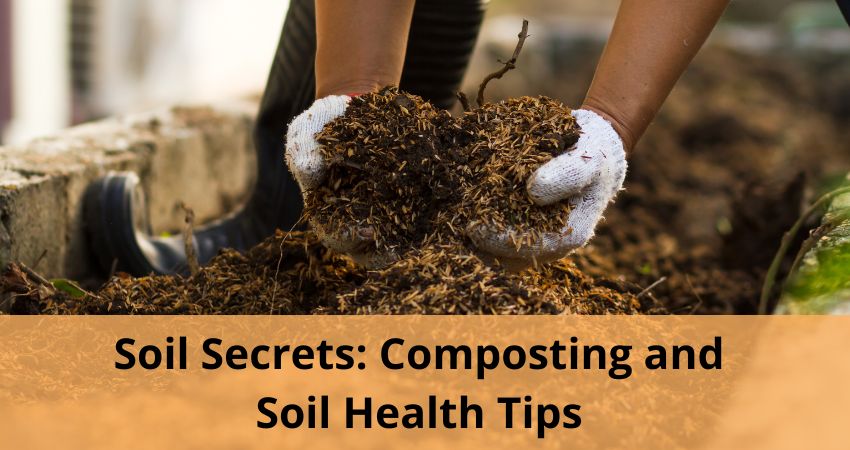
10. Soil Secrets: Composting and Soil Health Tips
Healthy soil is the foundation of a thriving garden. Composting and soil management are essential practices for maintaining nutrient-rich soil that supports plant growth.
The Importance of Healthy Soil
Healthy soil provides essential nutrients and supports strong root development. It improves water retention and drainage, creating an optimal environment for plants. Soil health is crucial for the long-term success of your garden.
Composting Basics and Benefits
Composting turns kitchen scraps and garden waste into nutrient-rich compost. Use compost to enrich your soil, improve its structure, and increase its fertility. Composting reduces waste and promotes sustainable gardening practices.
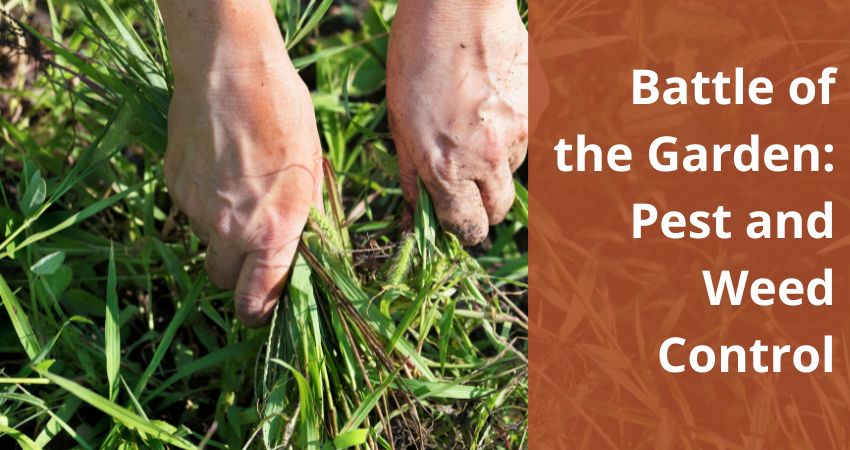
11. Battle of the Garden: Pest and Weed Control
Effective pest and weed control is essential for a healthy garden. Managing these common challenges keeps your plants thriving and reduces the risk of diseases.
Common Landscape Pests and Weeds
Identify common pests like aphids, slugs, and caterpillars. Recognize invasive weeds that compete with your plants for nutrients and water. Early identification and intervention are key to effective control.
Natural and Chemical Control Methods
Use natural methods, such as beneficial insects and organic sprays, to control pests. Mulching and manual weeding help manage weed growth. When necessary, use chemical treatments responsibly, following all safety guidelines to protect your garden and the environment.
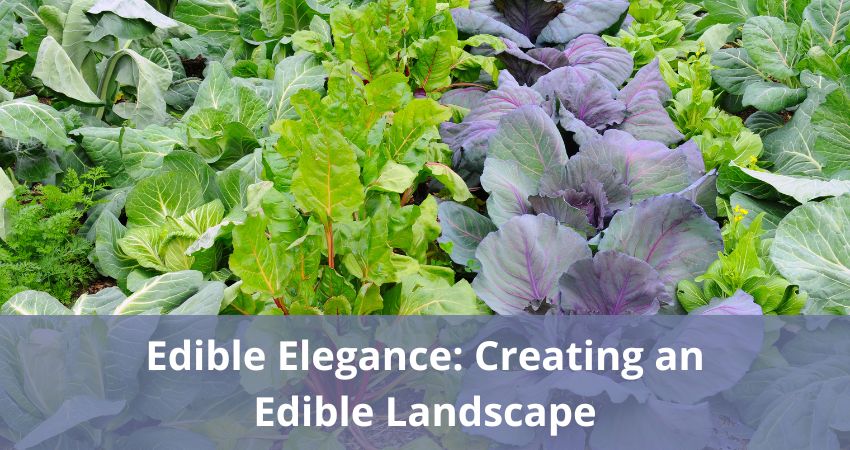
12. Edible Elegance: Creating an Edible Landscape
Edible landscaping combines beauty and functionality, allowing you to grow your own food while enhancing your garden’s aesthetic appeal. Incorporating edible plants into your landscape adds diversity and sustainability.
Benefits of Edible Landscaping
Edible landscaping offers fresh, homegrown produce and reduces grocery costs. It promotes healthier eating and environmental sustainability by reducing food miles. Aesthetically, edible plants like herbs, vegetables, and fruit trees can be as attractive as ornamental plants.
Best Edible Plants for Landscaping
Choose versatile plants like tomatoes, peppers, and basil for summer gardens. In cooler seasons, grow kale, spinach, and garlic. Fruit trees and berry bushes add structure and provide seasonal harvests. Mix edible plants with flowers for a visually appealing and productive garden.
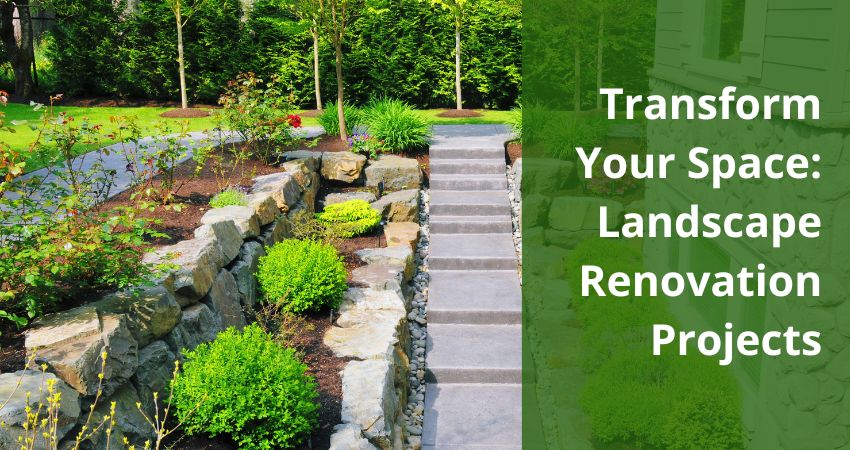
13. Transform Your Space: Landscape Renovation Projects
Landscape renovation breathes new life into tired, outdated gardens. Whether you’re making minor adjustments or undertaking a major overhaul, renovation projects can dramatically improve your outdoor space.
Planning a Landscape Renovation
Start by assessing your current landscape and identifying areas for improvement. Create a plan that incorporates new design elements, plantings, and hardscapes. Set a budget and timeline to keep your project on track.
Common Renovation Projects
Popular renovation projects include updating garden beds, adding new pathways, and installing outdoor living areas. Consider incorporating features like water gardens, raised beds, and pergolas to enhance functionality and aesthetics.
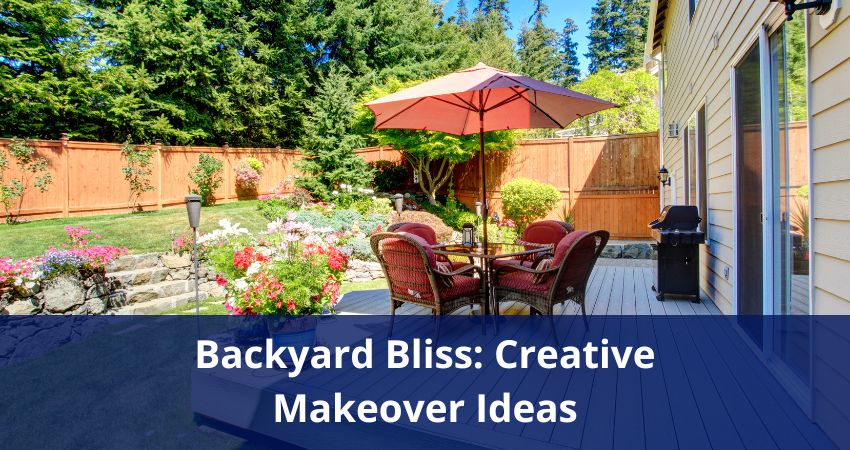
14. Backyard Bliss: Creative Makeover Ideas
A backyard makeover can transform an ordinary space into a personal oasis. With creative ideas and thoughtful planning, you can create a backyard that reflects your style and meets your needs.
Creative Backyard Makeover Ideas
Incorporate elements like fire pits, outdoor kitchens, and seating areas for entertaining. Use plants to create privacy screens and add color. Install a mix of hardscapes and softscapes to balance functionality and beauty.
Budget-Friendly Makeover Tips
Repurpose materials like old bricks and wood pallets to save money. DIY projects, such as building your own planter boxes or creating a garden path, can reduce costs. Prioritize high-impact changes that offer the most significant visual and functional improvements.
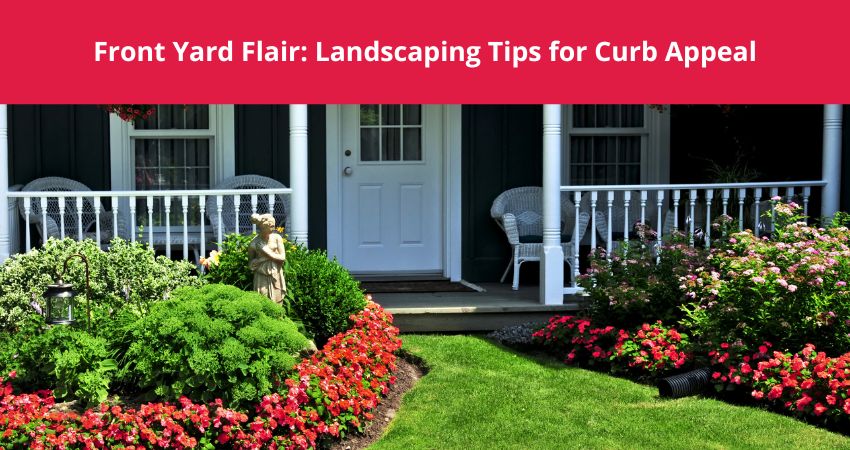
15. Front Yard Flair: Landscaping Tips for Curb Appeal
Your front yard sets the tone for your home, making curb appeal essential. Thoughtful front yard landscaping enhances your home’s appearance and creates a welcoming entry.
Designing a Welcoming Front Yard
Create a focal point with a beautiful tree or garden bed. Use pathways to guide visitors to your front door. Incorporate a mix of plants, including evergreens, perennials, and annuals, to ensure year-round interest.
Low-Maintenance Front Yard Ideas
Choose low-maintenance plants that thrive in your climate. Use mulch to reduce weeds and retain soil moisture. Consider installing an automated irrigation system to simplify watering. Hardscape elements like gravel paths and stone borders add structure with minimal upkeep.

16. Smart Landscaping: Budgeting and Planning Tips
Successful landscaping starts with careful planning and budgeting. By setting clear goals and managing your resources, you can create a stunning landscape without breaking the bank.
Importance of Landscaping Budgeting
A well-planned budget helps prioritize projects and prevents overspending. It allows you to allocate funds for essential elements while planning for future enhancements.
Tips for Creating a Landscape Budget
List all desired features and estimate their costs. Include materials, labor, and maintenance expenses. Research prices and compare options. Adjust your plan to fit your budget, focusing on high-impact areas first.
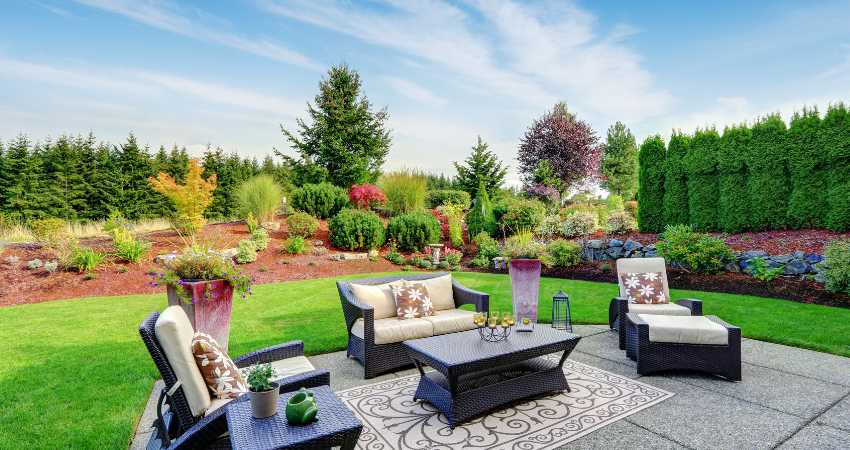
17. Cozy and Compact: Small Space Landscaping Ideas
Transforming small outdoor spaces into beautiful, functional areas requires creativity and smart design choices. With the right strategies, even the tiniest garden can become a charming retreat.
Maximizing Small Outdoor Spaces
Use vertical gardening techniques to save ground space. Install wall planters, trellises, and hanging baskets. Choose compact, multi-functional furniture that fits the scale of your space.
Best Plants and Features for Small Gardens
Opt for dwarf or compact plant varieties that won’t overwhelm the area. Incorporate elements like water features, mirrors, and lighting to add depth and interest. Use containers to create flexible, movable plant displays.
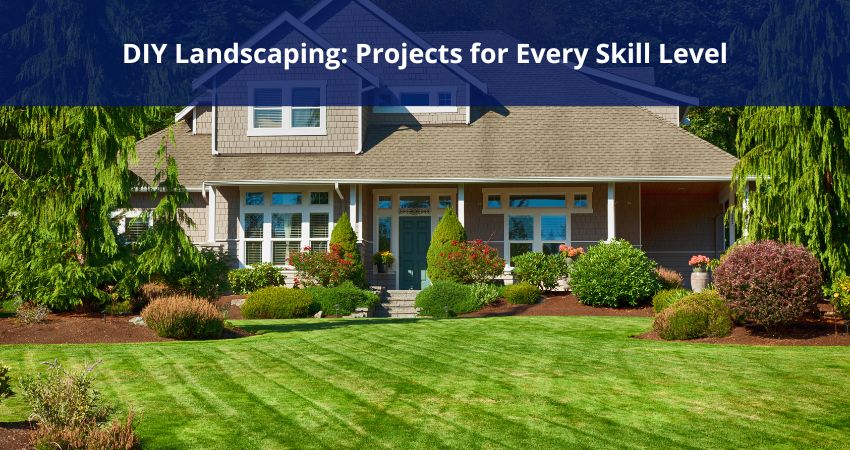
18. DIY Landscaping: Projects for Every Skill Level
DIY landscaping projects are a great way to personalize your garden while saving money. From simple tasks to more complex builds, there’s a DIY project for every skill level.
Popular DIY Landscaping Projects
Build your own raised garden beds, install a garden path, or create a compost bin. These projects are manageable for beginners and make a big impact on your garden’s functionality and appearance.
Step-by-Step Guides for DIY Enthusiasts
Follow detailed instructions to complete your projects successfully. Gather all necessary tools and materials before starting. Take your time and enjoy the process, knowing that your efforts will enhance your garden’s beauty and usability.

19. Pet Paradise: Creating a Pet-Friendly Landscape
Designing a pet-friendly landscape ensures your garden is safe and enjoyable for your furry friends. With thoughtful planning, you can create an outdoor space that meets both your needs and those of your pets.
Designing a Safe and Fun Pet-Friendly Garden
Use pet-safe plants and materials to avoid toxic hazards. Create designated areas for play, rest, and potty breaks. Install secure fencing to keep pets safe and contained.
Best Plants and Features for Pet-Friendly Landscapes
Choose durable, non-toxic plants like sunflowers, marigolds, and rosemary. Provide shaded areas and water features to keep pets cool and hydrated. Consider adding a sandpit or digging area to satisfy your pet’s natural instincts.
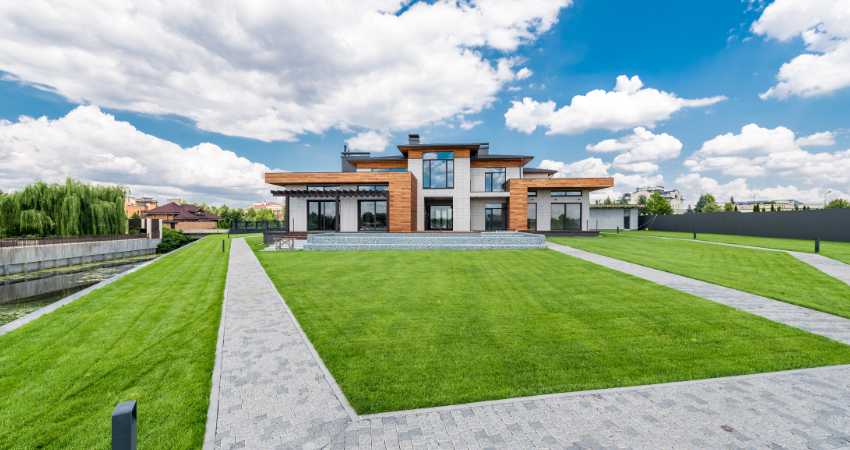
20. Accessible and Secure: Landscape Safety and Accessibility
Creating a landscape that’s both safe and accessible ensures everyone can enjoy your garden. Thoughtful design and careful planning make outdoor spaces welcoming for all ages and abilities.
Importance of Safety and Accessibility in Landscaping
Safe, accessible gardens prevent accidents and enhance usability. They accommodate the needs of children, seniors, and people with disabilities, making outdoor spaces inclusive and enjoyable.
Designing Accessible Gardens for All Abilities
Incorporate wide, smooth pathways for easy navigation. Use raised beds and container gardens for accessible planting. Install handrails, ramps, and seating areas to provide support and comfort.
Safety Tips for Outdoor Spaces
Ensure proper lighting along pathways and steps to prevent trips and falls. Use non-slip surfaces for walkways and patios. Regularly inspect and maintain garden features to keep them safe and functional.
Conclusion
Transforming your outdoor space through thoughtful landscaping can create a stunning sanctuary that enhances your home’s beauty and functionality. From mastering lawn care and integrating hardscapes to designing eco-friendly gardens and pet-friendly landscapes, our guide has covered essential tips and ideas to inspire your next project.
By incorporating creative design elements, sustainable practices, and practical solutions, you can achieve a landscape that reflects your style and meets your needs. Whether you’re planning a major renovation or making small improvements, every effort contributes to a more beautiful and enjoyable outdoor environment.
If you need professional assistance to bring your landscaping dreams to life, don’t hesitate to contact Moran’s Landscaping & Excavation LLC. Our team of experts is ready to help you create the perfect outdoor space tailored to your vision. Reach out today and let us transform your landscape into a breathtaking retreat.

